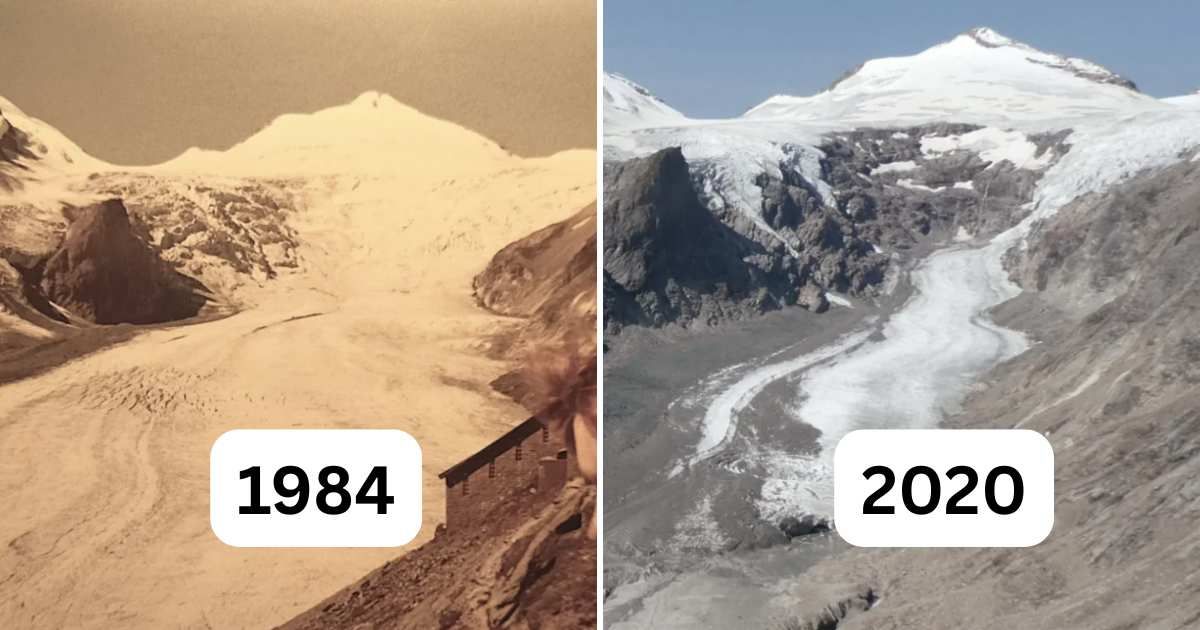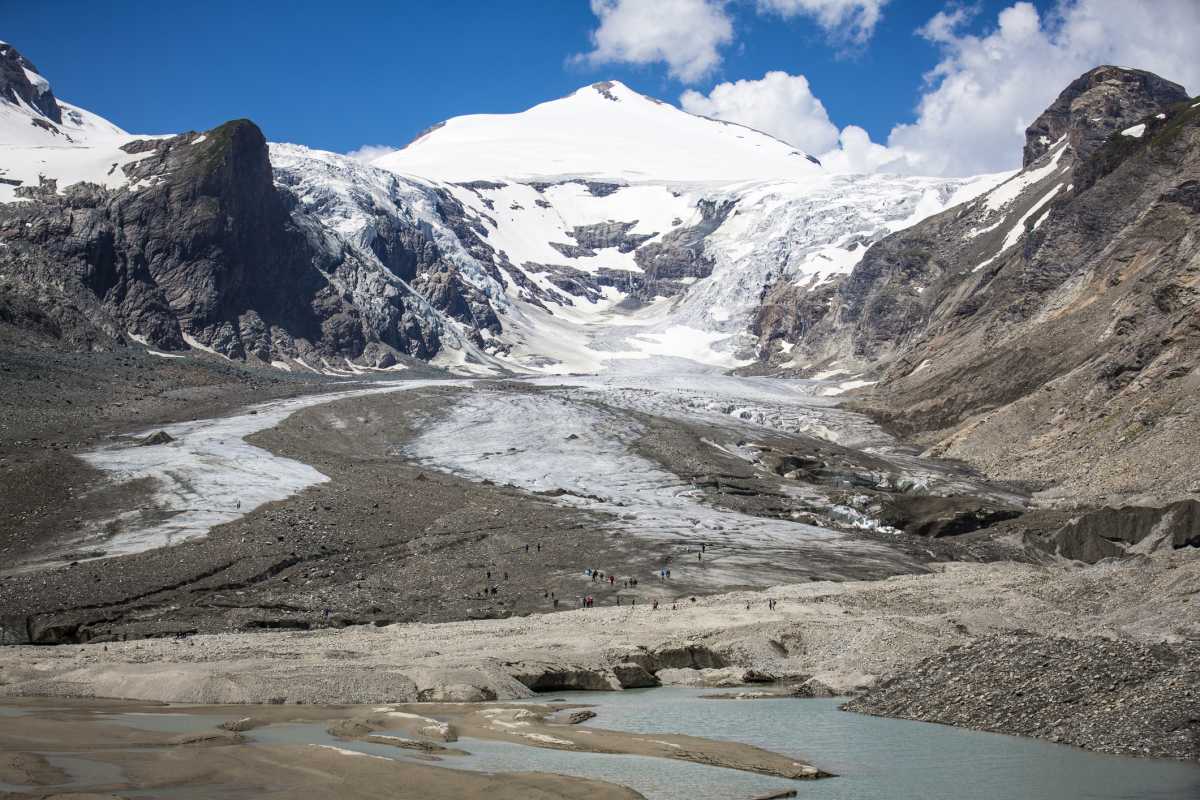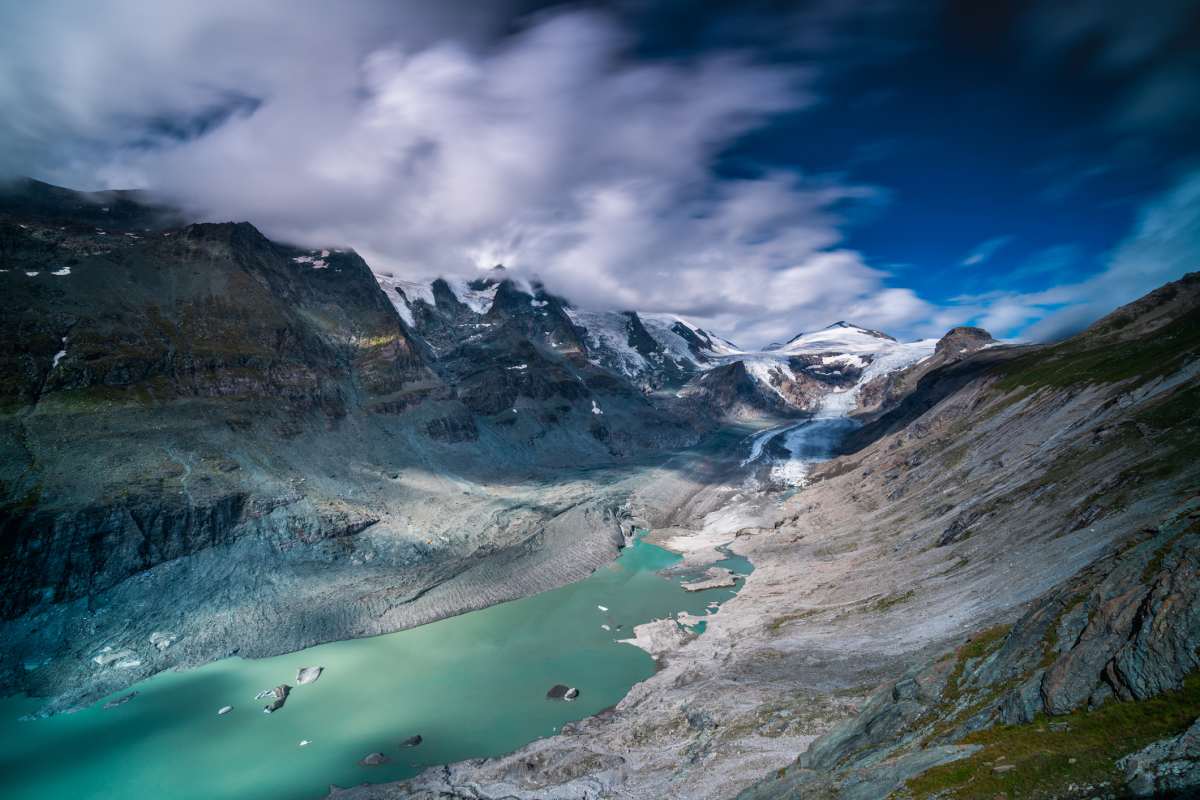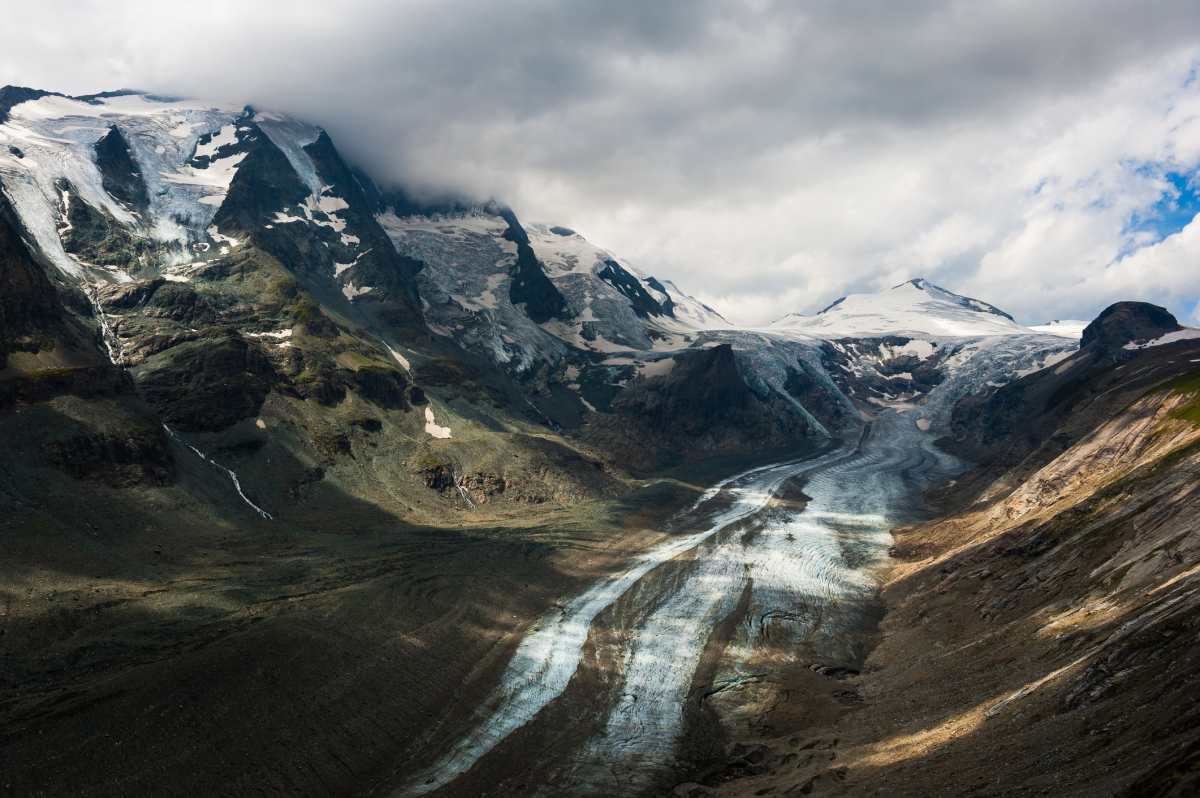Before and After Photos Captured by Travelers Depict the Harsh Reality of This Dying Swiss Glacier

Rushing from between the rugged slopes of Grossglockner, Austria’s highest peak in the southern province of Carinthia, Switzerland’s Pasterze Glacier has been making scientists and glaciologists go bonkers with fear. Travelers and people in general are planning to flock to Switzerland to get their scrapbooks and photo albums autographed by this receding glacier. Lately, dozens of people have been sharing “before and after” photos of Pasterze, depicting how the glacier is gravely ill.

Earlier, the blue, icy glacier that bubbled playfully among the rising and falling valleys of the sloping mountains is now feeble like the final sputters of a boiling soup before it quietens down. At times, when the bluish-white bergs start cracking, they behave passively-aggressively, threatening to unleash and spill their unstoppable barrage of floodwaters with sudden outbursts upon the surrounding regions.

Pasterze is dying. According to a report by the Austrian Alpine Club, it has lost 10 percent of its volume in the past two years alone and has shrunk by at least 203.5 meters. In another report published in the journal Cold Regions Science and Technology, researchers said that Pasterze is decaying, decelerating, and thinning at a rapid rate. The melting has been going on since the Little Ice Age, but the momentum it has gained in recent decades is beyond alarming.

The reasons are many, but three triumph over them all. With little to no snowfall in the winter, the glacier already receives less snow cover. On top of it, when summertime arrives, the unprotected ice of the glacier is swallowed and slurped by the scorching Sun, as a CGTN reporter described in a video. The blasts of orange dust from the Sahara desert storms add another layer of threat to the glacier. This mineral dust reduces the “snow albedo,” which means the snow becomes less reflective. As a result, it drinks up copious amounts of solar radiation, which accelerates the glacier’s melting rate, propelling it to an irreversible collapse.
Reddit user u/NATZureMusic shared a picture postcard of Pasterze, compiling the photos their mother had captured between 1984 and 2020. While the older photo showed a thick, white patch of glacier sliding between the rocky downslope of the mountains, the later picture was disappointing. The white of the glacier splattered over the mountains was reduced to a flimsy smear like traces of jam licked away from the bread’s top. The remaining mountainscape was invaded by just these jagged, rocky cliffs dusted in charcoal grey powder.
In another post, Reddit user u/moseldrache brought attention to Pasterze's comatose condition with photos snapped by their dad in 1978 and 2019, respectively. Like the previous post, the first photo from 1978 also displayed a cornucopia of icy stuff babbling through the mountain curves. But in a dramatic contrast, the 2019 picture resembled just a blanket of thin mist laid atop the dusty hills.
View this post on Instagram
A time-lapse video on Instagram also captured the rapid retreat of Pasterze, depicting how the glacier shrank from a whipped cream frosting to a mere sugar dusting on the marble chocolate cakes of Grossglockner. As the white disappears and retreats from the rocky edges, looming shadows cast by the day’s Sun claw over the mountains, grinning triumph at the dying glacier.
More on Green Matters
Satellite Images Chronicle the Total Collapse of a New York-Sized Ice Shelf in Antarctica
Melting Ice on the Rocky Mountains Reveals 6000-Year-Old Secret About Earth’s Climate History